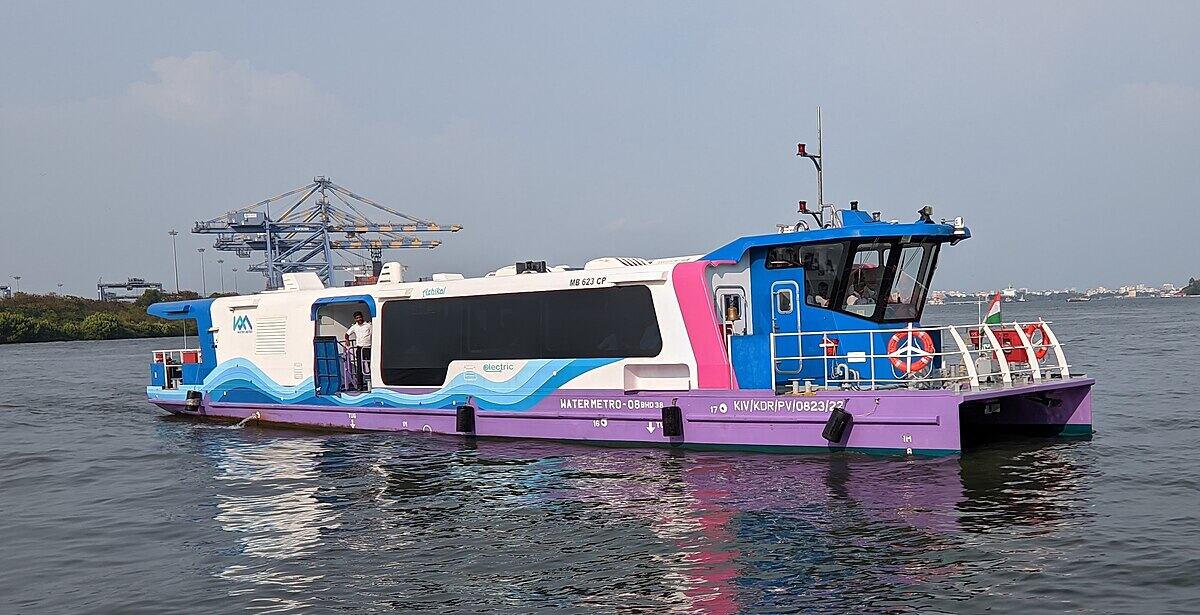Patna’s Water Metro project is set to transform the city’s public transportation system by introducing a cleaner, greener, and faster mode of travel along the Ganga River. The initiative, announced by Union Minister Sarbananda Sonowal, reflects the government’s broader vision to harness the potential of inland waterways for urban commuting, inspired by the successful Kochi Water Metro model.
Background and Concept
The concept of a water metro involves the deployment of electric or hybrid ferries that operate on predefined, scheduled routes similar to buses or trains. The first of its kind was introduced in Kochi, Kerala, connecting island communities to the mainland. Since its launch in 2023, Kochi Water Metro has catered to over 4 million passengers, becoming a benchmark for sustainable and efficient transport.
Patna’s version of the water metro seeks to replicate and customize this model for its unique geographical and urban layout. By using the Ganga River—a vital but underutilized asset—the city plans to ease traffic congestion and reduce carbon emissions.
Reasons Behind the Initiative
Patna’s Water Metro addresses multiple urban challenges:
- Overburdened Road Infrastructure: The city’s roads experience daily gridlocks due to an ever-growing number of private vehicles and limited space for road expansion.
- Geographical Constraints: Patna’s linear east-west layout along the river makes it ideal for ferry-based transportation.
- Underutilization of the Ganga: Despite flowing through the heart of the city, the river has not been effectively integrated into the transport network.
This project aims to introduce an eco-friendly, reliable mode of transportation, leveraging natural waterways to reduce pressure on roads.
Current Project Status
The Inland Waterways Authority of India (IWAI) has commissioned Kochi Metro Rail Limited (KMRL) to conduct a feasibility study. This includes:
- Surveying key ghats (river banks) along the Ganga.
- Assessing sediment levels, water depth, and seasonal changes.
- Estimating potential commuter volume and identifying high-demand routes.
The study’s results will guide route planning, terminal design, and financial modelling, ensuring a phased and cost-effective implementation.
Key Challenges
While the potential is high, several challenges remain:
- Seasonal Navigation Issues: The Ganga’s water levels vary dramatically with the seasons, affecting ferry operations.
- Lack of Modern Infrastructure: Current ferry services are mostly informal and lack standardised jetties, safety measures, or scheduling systems.
- Administrative Coordination: Multiple authorities—urban, maritime, and environmental—must collaborate to ensure smooth functioning.
- Public Adaptation: Educating and encouraging commuters to adopt this new mode of transport is essential.
Anticipated Benefits
If executed successfully, Patna’s Water Metro could deliver a host of benefits:
- Traffic Decongestion: Diverting daily commuters from roads to waterways will ease traffic pressure significantly.
- Reduced Pollution: The use of electric ferries will reduce vehicular emissions and improve air quality.
- Enhanced Connectivity: Terminals located near business hubs, tourist areas, and residential colonies will offer seamless travel.
- Economic Opportunities: From job creation to promoting river tourism, the project is expected to stimulate local economies.
Integration with Existing Transport Systems
The water metro will not function in isolation. It is designed to complement Patna’s upcoming rail metro, ensuring multimodal connectivity. Plans include:
- Water metro terminals near rail stations, bus terminals, and key urban centres.
- Unified ticketing systems and scheduling to make transfers smooth and time-efficient.
Such integration could make public transport more attractive and reduce the city’s dependency on personal vehicles.
Alignment with National Development Goals
This initiative supports the Jal Marg Vikas Project under National Waterway-1, which aims to promote inland water transport (IWT) across the country. It is also in line with the government’s focus on green urban mobility and sustainable infrastructure.
Conclusion
Patna’s Water Metro represents a bold step towards modernising urban transport by combining innovation, sustainability, and regional relevance. It aligns with national policies while addressing local challenges. With proper execution, this initiative could serve as a model for other riverine cities in India looking to unlock the potential of their waterways for a cleaner and more efficient future.
